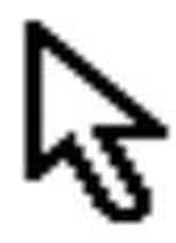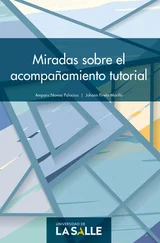Andy Pike - DirectX 8 Programming Tutorial
Здесь есть возможность читать онлайн «Andy Pike - DirectX 8 Programming Tutorial» весь текст электронной книги совершенно бесплатно (целиком полную версию без сокращений). В некоторых случаях можно слушать аудио, скачать через торрент в формате fb2 и присутствует краткое содержание. Жанр: Программирование, на английском языке. Описание произведения, (предисловие) а так же отзывы посетителей доступны на портале библиотеки ЛибКат.
- Название:DirectX 8 Programming Tutorial
- Автор:
- Жанр:
- Год:неизвестен
- ISBN:нет данных
- Рейтинг книги:5 / 5. Голосов: 1
-
Избранное:Добавить в избранное
- Отзывы:
-
Ваша оценка:
- 100
- 1
- 2
- 3
- 4
- 5
DirectX 8 Programming Tutorial: краткое содержание, описание и аннотация
Предлагаем к чтению аннотацию, описание, краткое содержание или предисловие (зависит от того, что написал сам автор книги «DirectX 8 Programming Tutorial»). Если вы не нашли необходимую информацию о книге — напишите в комментариях, мы постараемся отыскать её.
DirectX 8 Programming Tutorial — читать онлайн бесплатно полную книгу (весь текст) целиком
Ниже представлен текст книги, разбитый по страницам. Система сохранения места последней прочитанной страницы, позволяет с удобством читать онлайн бесплатно книгу «DirectX 8 Programming Tutorial», без необходимости каждый раз заново искать на чём Вы остановились. Поставьте закладку, и сможете в любой момент перейти на страницу, на которой закончили чтение.
Интервал:
Закладка:
Now that we have specified our light, we need to add it to our scene and enable it. To do this we must assign it to our device's light list. We do this my using the SetLight method passing in the position in the list as the first parameter. This is a zero based list, so the first position is index 0. Then, to enable the light (turn it on), we use the LightEnable method. The first parameter is the lights index in the light list and the second parameter defines if we should turn the light on or off (TRUE = on, FALSE = off).
We then call SetRenderState to make sure that lighting in general is enabled. Finally, we call SetRenderState again to setup the ambient light level for the whole scene.
D3DLIGHT8 d3dLight;
//Initialize the light structure.
ZeroMemory(&d3dLight, sizeof(D3DLIGHT8));
//Set up a white point light at (0, 0, –10).
d3dLight.Type = D3DLIGHT_POINT;
d3dLight.Diffuse.r = 1.0f;
d3dLight.Diffuse.g = 1.0f;
d3dLight.Diffuse.b = 1.0f;
d3dLight.Ambient.r = 0.0f;
d3dLight.Ambient.g = 0.0f;
d3dLight.Ambient.b = 0.0f;
d3dLight.Specular.r = 0.0f;
d3dLight.Specular.g = 0.0f;
d3dLight.Specular.b = 0.0f;
d3dLight.Position.x = 0.0f;
d3dLight.Position.y = 0.0f;
d3dLight.Position.z = –10.0f;
d3dLight.Attenuation0 = 1.0f;
d3dLight.Attenuation1 = 0.0f;
d3dLight.Attenuation2 = 0.0f;
d3dLight.Range = 100.0f;
//Assign the point light to our device in poisition (index) 0
m_pD3DDevice->SetLight(0, &d3dLight);
//Enable our point light in position (index) 0
m_pD3DDevice->LightEnable(0, TRUE);
//Turn on lighting
m_pD3DDevice->SetRenderState(D3DRS_LIGHTING, TRUE);
//Set ambient light level
m_pD3DDevice->SetRenderState(D3DRS_AMBIENT, D3DCOLOR_XRGB(32, 32, 32));
Step 3: Setup Material
To setup the materials for our cubes we need to add a new method to CCuboid called SetMaterial which will enable use to have a different material for each cube if we wish. We define a member variable of CCuboid called m_matMaterial which is a structure of type D3DMATERIAL8. We then set values for each attribute of the structure. Set need to define the Diffuse, Ambient and Specular reflection RGBA values followed by the Emissive RGBA value. Make sure that you initialise all of these value (especially Emissive) otherwise you may find that your lighting does not work correctly.
bool CCuboid::SetMaterial(D3DCOLORVALUE rgbaDiffuse, D3DCOLORVALUE rgbaAmbient, D3DCOLORVALUE rgbaSpecular, D3DCOLORVALUE rgbaEmissive, float rPower) {
//Set the RGBA for diffuse light reflected from this material.
m_matMaterial.Diffuse = rgbaDiffuse;
//Set the RGBA for ambient light reflected from this material.
m_matMaterial.Ambient = rgbaAmbient;
//Set the color and sharpness of specular highlights for the material.
m_matMaterial.Specular = rgbaSpecular;
m_matMaterial.Power = rPower;
//Set the RGBA for light emitted from this material.
m_matMaterial.Emissive = rgbaEmissive;
return true;
}
In the CCuboid constructor, we call SetMaterial to give the cube a default material, as shown below.
//Set material default values (R, G, B, A)
D3DCOLORVALUE rgbaDiffuse = {1.0, 1.0, 1.0, 0.0,};
D3DCOLORVALUE rgbaAmbient = {1.0, 1.0, 1.0, 0.0,};
D3DCOLORVALUE rgbaSpecular = {0.0, 0.0, 0.0, 0.0,};
D3DCOLORVALUE rgbaEmissive = {0.0, 0.0, 0.0, 0.0,};
SetMaterial(rgbaDiffuse, rgbaAmbient, rgbaSpecular, rgbaEmissive, 0);
Finally, in our CCuboid's Render method, we need to use the SetMaterial method to tell DirectX that we want to use our material for all future vertices.
m _pD3DDevice->SetMaterial(&m_matMaterial);
Step 4: Generate Normals
We've changed the way that the cube is made up. Rather than three triangle strips, we are now using a triangle list of 12 triangles which is 36 vertices! So we define our vertices as before, except this time we remove the colour component and replace it with a Normal vector initialised to zero. We then loop around each triangle and calculate what the Normal vector should be for that triangle using the GetTriangeNormal method. We will then set each of the three vertices normals for that triangle to be the same as the triangle polygon Normal itself. The two code snippets below show the GetTriangeNormal method and the triangle looping.
We set the vertices to be that same as the polygon because we are rendering a shape with sharp edges. We only really need to average the normals of shared vertices if we are drawing a smooth shape like a sphere.
D3DVECTOR CCuboid::GetTriangeNormal(D3DXVECTOR3* vVertex1, D3DXVECTOR3* vVertex2, D3DXVECTOR3* vVertex3) {
D3DXVECTOR3 vNormal;
D3DXVECTOR3 v1;
D3DXVECTOR3 v2;
D3DXVec3Subtract(&v1, vVertex2, vVertex1);
D3DXVec3Subtract(&v2, vVertex3, vVertex1);
D3DXVec3Cross(&vNormal, &v1, &v2);
D3DXVec3Normalize(&vNormal, &vNormal);
return vNormal;
}
//Set all vertex normals
int i;
for (i = 0; i < 36; i += 3) {
vNormal = GetTriangeNormal(&D3DXVECTOR3(cvVertices[i].x, cvVertices[i].y, cvVertices[i].z), &D3DXVECTOR3(cvVertices[i + 1].x, cvVertices[i + 1].y, cvVertices[i + 1].z), &D3DXVECTOR3(cvVertices[i + 2].x, cvVertices[i + 2].y, cvVertices[i + 2].z));
cvVertices[i].nx = vNormal.x;
cvVertices[i].ny = vNormal.y;
cvVertices[i].nz = vNormal.z;
cvVertices[i + 1].nx = vNormal.x;
cvVertices[i + 1].ny = vNormal.y;
cvVertices[i + 1].nz = vNormal.z;
cvVertices[i + 2].nx = vNormal.x;
cvVertices[i + 2].ny = vNormal.y;
cvVertices[i + 2].nz = vNormal.z;
}
Fig 7.6 below shows the Normals for three of the faces of the cube. The Normals for each of the other vertices will also be the same as the faces. If we were to average the Normals, the cube would appear to have rounded edges. We should only average the Normals of shared vertices if we are rendering a smooth object. I'll show you how to average Normals into one in a future tutorial.
Fig 7.6
Finally, in our CCuboid's Render method, we need to change how we render our cube by using D3DPT_TRIANGLELIST rather than D3DPT_TRIANGLESTRIP.
m_pD3DDevice->DrawPrimitive(D3DPT_TRIANGLELIST, 0, 12);
Once you have made these changes, you should finish up with four rotating cubes, each with a different texture (shown below). There is a light source in the center of the four cubes, so as they rotate, you can see that some faces are lit and some are in shadow.
In this tutorial we've covered a lot of stuff. We've learnt all about the different types of lights and their properties. We've seen how materials can affect how an objects looks once rendered. In the next tutorial we'll take a look at Index Buffers.
DirectX Tutorial 8: Index Buffers
Интервал:
Закладка:
Похожие книги на «DirectX 8 Programming Tutorial»
Представляем Вашему вниманию похожие книги на «DirectX 8 Programming Tutorial» списком для выбора. Мы отобрали схожую по названию и смыслу литературу в надежде предоставить читателям больше вариантов отыскать новые, интересные, ещё непрочитанные произведения.
Обсуждение, отзывы о книге «DirectX 8 Programming Tutorial» и просто собственные мнения читателей. Оставьте ваши комментарии, напишите, что Вы думаете о произведении, его смысле или главных героях. Укажите что конкретно понравилось, а что нет, и почему Вы так считаете.









